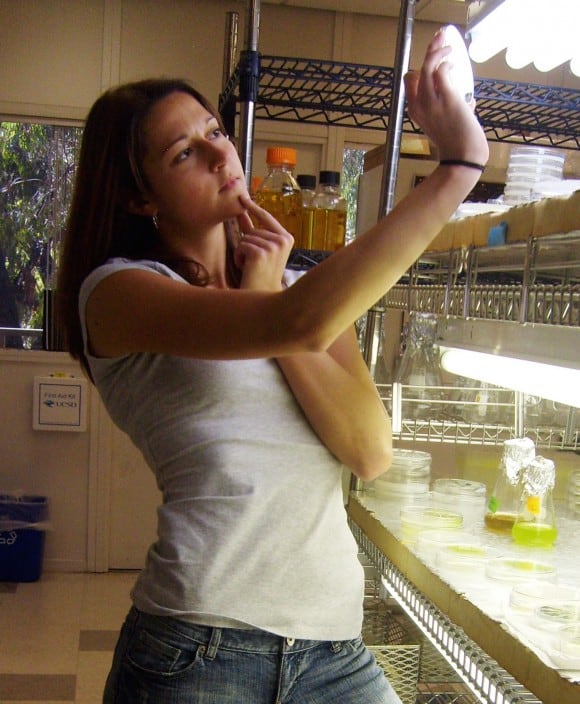
Various projections for commercially available lab meat have been made since the unveiling of Mark Post’s in vitro burger in 2013. At the time Post predicted publicly available and affordable versions of his €300,000 burger would hit supermarkets around the world within seven years.
Almost four years on, this projection looks increasingly unlikely.
Yet Washington-based Good Food Institute (GFI) are bringing together scientists, business people, policy advisors, designers and writers to provide strategic support to companies researching and developing ‘clean meat’ to speed this process up.
FoodNavigator spoke to Dr Liz Specht, a biomolecular engineer and senior scientist at GFI, to find out the struggles this new technology is facing in industrialising and becoming a commercial, household food.
Means of production
Specht told us the biggest hurdle in making lab meat commercially viable would be creating bioreactors of a sufficient size and type.
A bioreactor is any device or system containing appropriate conditions for a biologically active environment. Breweries are one example.
Post said that his technique would need to be moved from a Petri dish to a reactor the size of an Olympic swimming pool to be made viable.
Different types of reactor could be used for this and it is unclear which will work best for culturing meat.
“I am privy to the varying techniques different groups like Memphis Meats and Mosa Meats are experimenting with, and whilst they rightly keep this information protected, I can tell you that each is pursuing a range of possibilities and methods – and this is how progress is achieved,” said Specht.
Whilst this is the area needing most innovation, Specht also said she was confident that by the time the other necessary hurdles had been jumped, workable industrial bioreactors would be available.
The process had also yet to be completely rid of animal products. Foetal bovine serum has traditionally been used in culturing cells, but Specht explained this could be the easiest aspect to alter.
“While cell culture media historically relied on animal serum, hundreds of formulations of animal-free media have already been developed – mostly for the biomedical and cellular therapy industries… What will take a bit more R&D will be getting these formulas much less expensive than they are now.”
As with all scientific challenges, Specht emphasised the biggest obstacle was a lack of human and financial resources, but added this could change.
Beefing up funding
Whilst only a handful of research labs and organisations are actively attempting to create cultured meat for human consumption, some are creating secondary animal products such as leather.
Modern Meadows, which has already produced samples of in vitro leather, claims this is a decisive ‘gateway’ into commercialising lab-meat itself, as leather has a higher profit margin.
Specht agreed, saying: “This is a common strategy for disrupting a market in which the entrenched product has very low profit margins and requires massive scale to make a dent in the market. Take biofuels, for instance. To compete with petroleum-based fuels, your technology needs to be very cheap and very scalable – two attributes that are hard to achieve with young technologies.
"So to bolster their financials and produce revenue early on, many companies whose long-term goal is to make biofuels are instead entering the market with products like nutraceuticals or green plastics or cosmetics.”
She also said the use of non-meat animal products, produced in vitro, could draw consumers into the market and generate better revenue for scaling up the cultured meat industry.
“Animal products like dairy, eggs, and gelatine can be made in much the same way that we've been making medicines like insulin for decades. The process is to essentially produce the animal protein using a host cell platform that is easy to grow at large scale – like yeast, for instance – and then purifying the protein. So at the end of the day, you are left with a product that is pure animal protein, but made without animals.”
Selling the concepts
Projects like Bistro in vitro – a fictitious restaurant speculating on all the possibilities lab-meat could produce by creating a mock menu - and the ‘home-brew’ lab meat creator SuperMeats are still currently conceptual.
However, they are also an important sign of investor and consumer interest.
“I think these conceptual projects are fascinating and will put clean meat on the radar of forward thinkers and early adopters, which is never a bad thing. However, I think investors in this space are driven – as all savvy investors are – by potential for profit and by technological feasibility.
"They see the market opportunity as enormous, and they see this technology as finally reaching a tipping point for feasibility. Industries that are inherently inefficient – like animal agriculture – are ripe for technology-driven disruption, and investors see the writing on the wall. If we expect to feed a growing population without sending our climate or our global food system into a tailspin, clean meat is a solid investment bet.”
